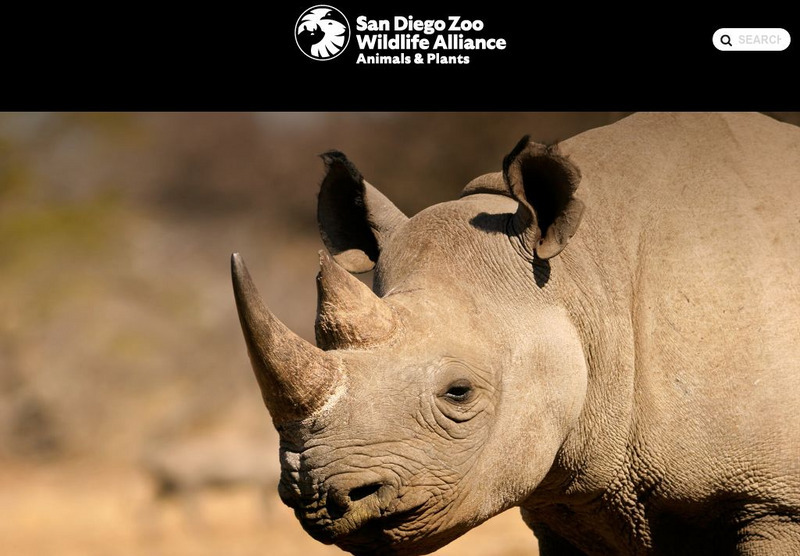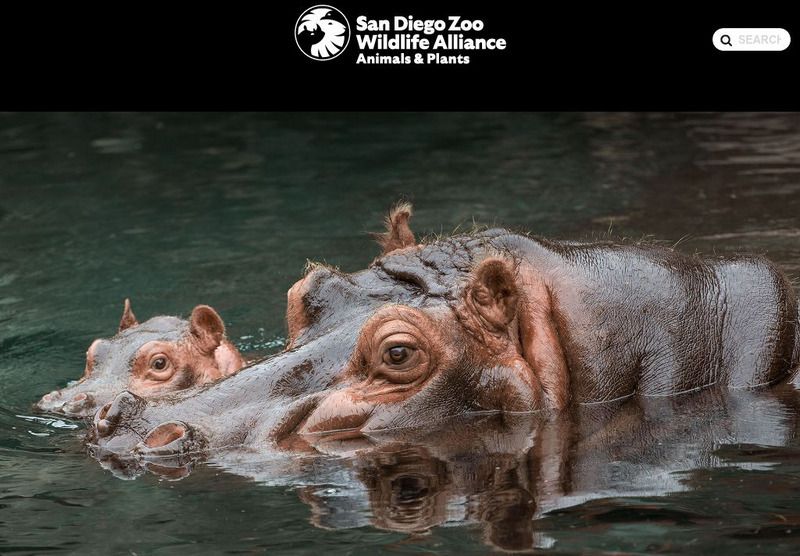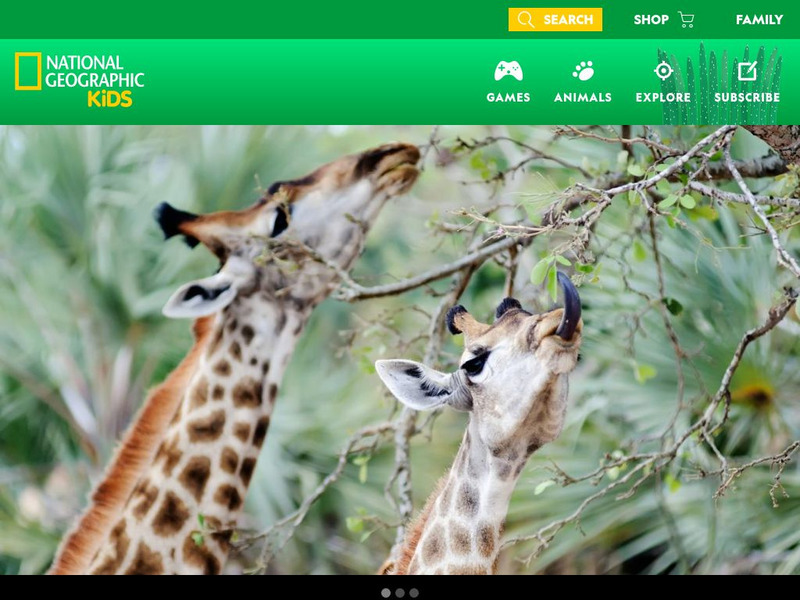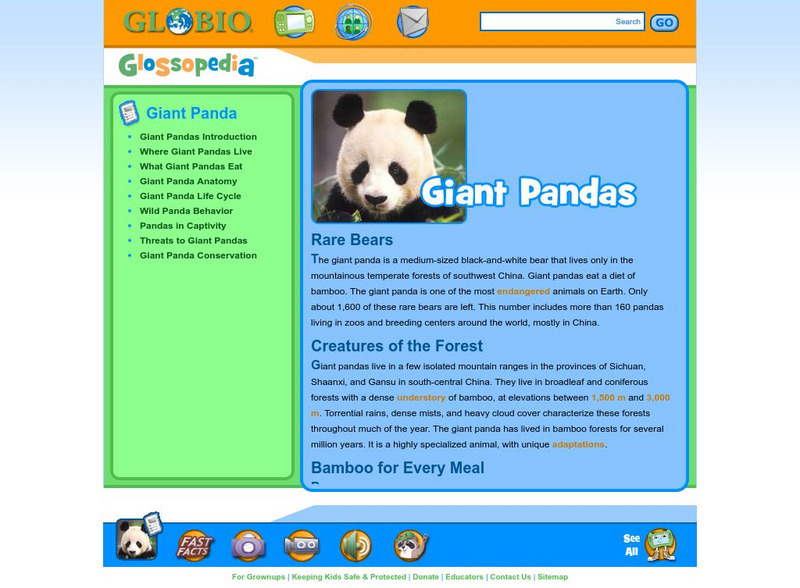Curated OER
Animals Abound
Students explore the world of mammals, birds, and fish to compare and contrast their habitats, adaptations, and camouflages. Through research, musical experiences, and hands-on activities, the lives and adventures of these animals are...
Curated OER
GED Vocabulary: Life Science
In this life science worksheet, middle schoolers review terms such as genetics, mutation, trait, predator, and herbivore by completing 8 questions in this crossword puzzle.
Curated OER
What Do Animals Eat?
In this animal diet worksheet, students will brainstorm what animals eat and write it down in a graphic organizer. Then students will brainstorm what people should eat and write it down.
Curated OER
Trophic Levels and Food Webs
In this biology activity, students identify and locate various vocabulary terms related to trophic levels and food webs. There are 27 biology terms located in the word search.
Curated OER
World of Dinosaurs Game
In this science instructional activity, students write each of the vocabulary terms that relate to earth science listed in the spaces of the bingo card provided. Then they use the clues at the bottom of the sheet to match to its correct...
Curated OER
Adopt-A-Dinosaur Fact Sheet
In this science worksheet, students complete the blank fact sheet by selecting a dinosaur of their choice. They name its family, size, location, time period found, foods ate, and some amazing facts about it.
Curated OER
Ecology Test Word Search
In this earth science worksheet, students locate and identify various vocabulary terms related to earth science. There are 19 words located in the puzzle.
Curated OER
Food Chain
In this science worksheet, students match the words given in the first column with the correct definition found in the second column. There are six vocabulary terms to define.
Curated OER
What Does It Eat?
Students, working in research teams, investigate the eating habits of crickets. They collect and record data and compare their methods and results with other groups by making tables or graphs. They sumarize their findings with posters or...
PBS
Pbs Learning Media: Ruminants
Why do cows chew their cud? This video segment from Secret of Life: "Accidents of Creation" describes the physical adaptations that have made ruminants some of the most important, and certainly the most efficient, plant eaters on earth.
Georgia Department of Education
Ga Virtual Learning: Earth and Life History
In this amazingly comprehensive tutorial you will learn about the geological and environmental changes that occurred during the geologic time scale.
San Diego Zoo Global
San Diego Zoo: Rhinoceros
This resource provides detailed information about the rhinoceros, as well as several pictures and audio clips.
San Diego Zoo Global
San Diego Zoo: Hippotpotamus
This resource presents detailed information about the hippotpotamus, including several photos and an audio clip.
Annenberg Foundation
Annenberg Learner: The Habitable Planet: Ecology Lab
Create the parameters of your own ecosystem by choosing which producers and consumers live there. Visualize how the food web operates and species populations change. This simulator mimics the food web within a typical ecosystem and gives...
National Geographic Kids
National Geographic Kids: Animals: Hippopotamus
Multi-media National Geographic site includes video and audio clips about hippopotamuses. Fun facts are great for students doing research projects and you can send a postcard to a friend.
National Geographic Kids
National Geographic Kids: Animals: Giraffes
This multi-media National Geographic site includes video and audio clips and fun facts all about giraffes. Students can even send a postcard to a friend.
Globio
Glossopedia: Giant Panda
Giant Pandas only live in the mountains of southwest China. This article focuses on Giant Panda habitat, diet, life cycle and reproduction. Extensive information is given on panda babies and the contrast between life in the wild and life...
Science Education Resource Center at Carleton College
Serc: Investigating Ecosystems:determining Feeding Relationships Among Organisms
In this lab, students will complete a field study about feeding relationships between organisms and present their findings in a food web as well as in a written narrative.
PBS
Pbs Teachers:yellowstone: Yellowstone Food Web
Investigate the interdependence of wildlife in the Yellowstone ecosystem and draw an ecosystem showing the interdependence of life forms.
Other
University of New Castle: Omnivores
A description of what an omnivore really eats. There are a lot of related links off to the right.
PBS
Pbs Nature Critter Guide: Porcupine
This PBS Critter Guide site tells you how many quills the average porcupine has as well as other facts about this creature's natural history in text and pictures.
PBS
Pbs Nature Critter Guide: Llama
Learn more about llamas when you check out this resource. This site features a clear and concise picture of how these fascinating mammals live and what purpose they serve to other animals and humans.
Scholastic
Scholastic: Study Jams! Science: Ecosystems: Food Webs
A video and a short multiple-choice quiz on food webs that explains the difference between food webs and food chains, and the relationships that exist between organisms.
Polk Brothers Foundation Center for Urban Education at DePaul University
De Paul University: Center for Urban Education: I Like Plants [Pdf]
"I Like Plants" is a one page, realistic fiction, reading passage about a person who loves plants and became a botanist; now she teaches her college students about plants and ecology. It is followed by constructed-response questions...























